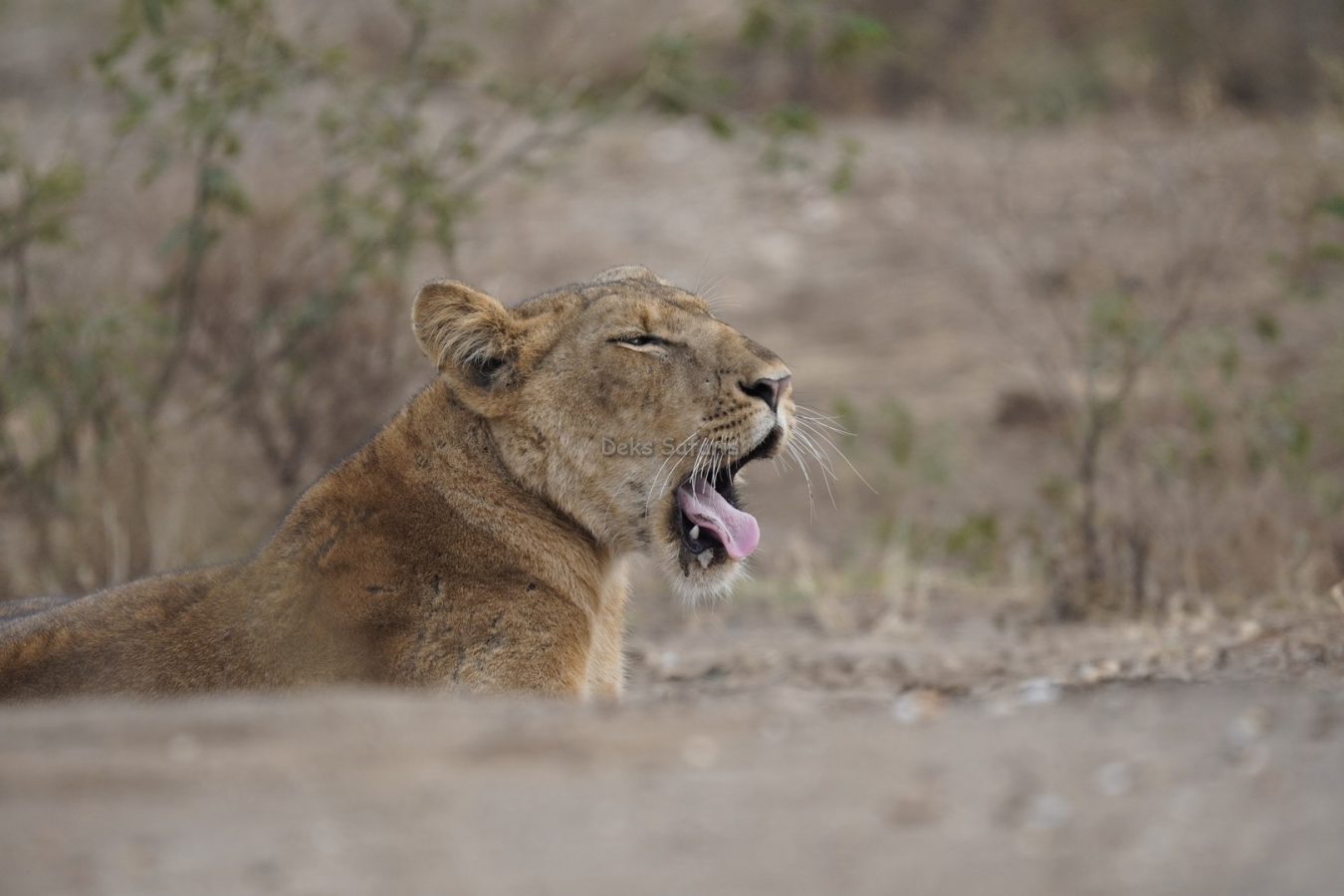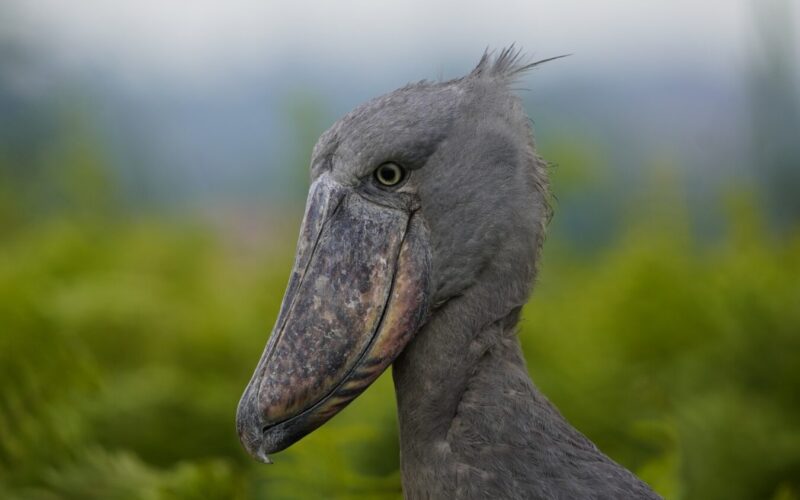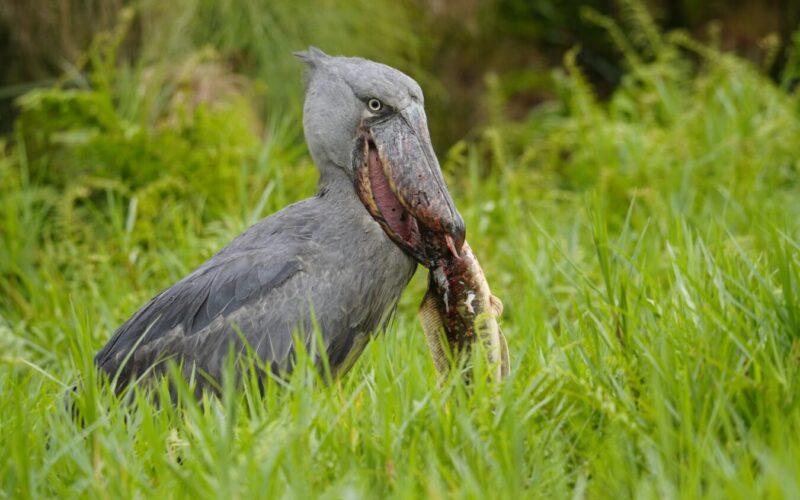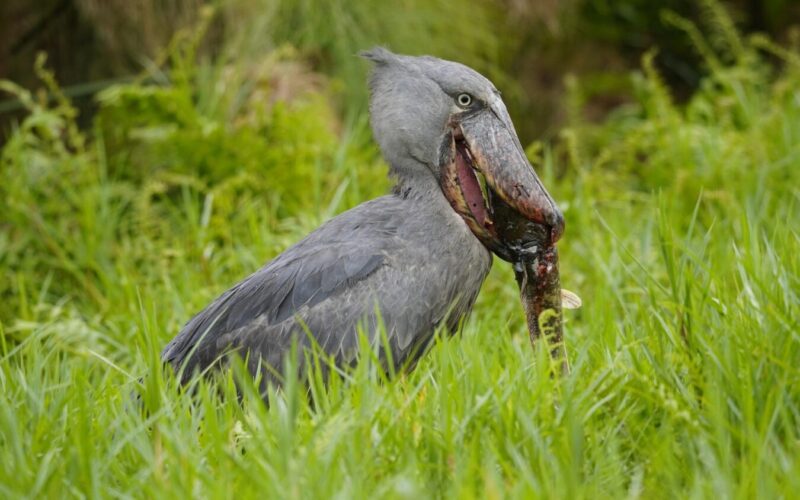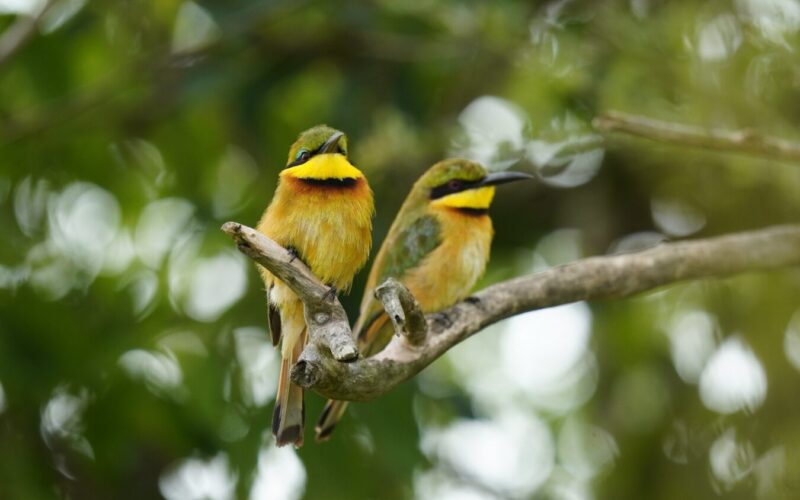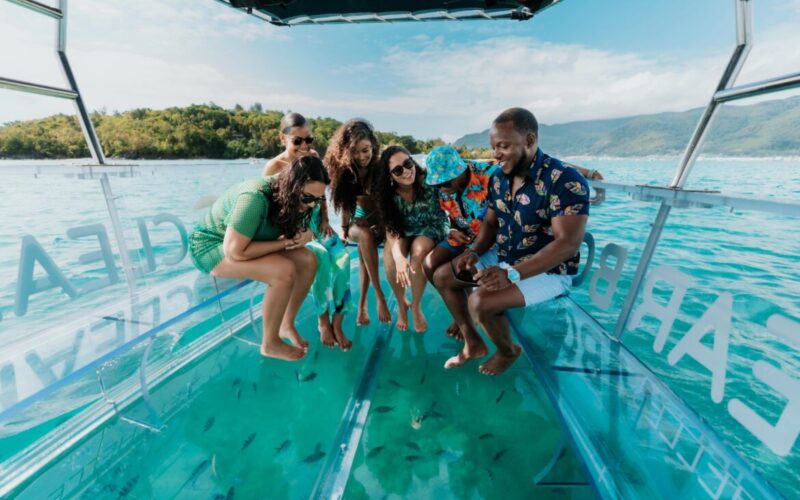
Why Are Tanzania Safaris So Expensive?
September 29, 2025
Kenya Safari vs. Tanzania
September 30, 2025Is Safari Cheaper in Kenya or Tanzania? – Deks Safaris & Tours
When planning an African adventure, travelers often wonder: Is safari cheaper in Kenya or Tanzania? Both countries offer extraordinary wildlife experiences, yet their pricing structures differ significantly. Kenya generally provides more budget-friendly safaris due to better infrastructure, lower park fees, and a wider range of affordable lodges. On the other hand, Tanzania safaris often cost more because of higher conservation fees, longer distances between parks, and a strong emphasis on exclusive, low-density tourism.
By comparing costs, experiences, and value, Deks Safaris & Tours helps travelers make informed choices while ensuring authentic and memorable journeys. A Tanzania Safari may require a larger budget, but it delivers unmatched access to the Great Migration, walking safaris, and iconic parks. A Kenya safari may cost less, but Tanzania Safaris Holidays offer a unique sense of exclusivity and premium wildlife encounters.
Why Is a Kenya Safari Cheaper than Tanzania?
To answer the question Is safari cheaper in Kenya or Tanzania? we must look at Kenya’s advantages in affordability. Kenya benefits from a well-established tourism infrastructure, with a large number of airlines, safari vehicles, and tour operators competing for visitors. This competition drives prices down and makes group tours and budget-friendly safaris widely accessible. Additionally, Kenya’s parks such as Amboseli and Maasai Mara are relatively close to Nairobi, reducing transport costs for travelers.
Park fees in Kenya are generally lower than in Tanzania, which makes safari holidays more budget-friendly. Kenya also offers a broader variety of accommodations, ranging from simple budget campsites to high-end luxury lodges. This diversity allows travelers to tailor safaris according to their budgets. Therefore, while luxury options exist, Kenya caters strongly to mid-range and budget travelers. Kenya’s affordability makes it appealing for first-time safari goers, while Tanzania Safaris remains the premium choice for those seeking exclusivity and iconic destinations.
Why Are Tanzania Safaris More Expensive?
On the other side of the debate Is safari cheaper in Kenya or Tanzania? lies Tanzania, where safaris are priced higher for several reasons. First, Tanzania charges significantly higher park fees, especially in iconic locations such as Serengeti National Park and the Ngorongoro Crater. These funds directly support conservation, anti-poaching units, and infrastructure maintenance, ensuring long-term protection of fragile ecosystems.
Second, Tanzania’s parks are vast and widely dispersed. Travelers often need domestic flights or long road transfers to move between destinations like Tarangire, Serengeti, and Ruaha. These logistics raise the cost of Tanzania Tours compared to Kenya. Finally, Tanzania prioritizes a low-density tourism model, limiting visitor numbers to protect its wildlife and landscapes. This exclusivity comes at a premium. However, travelers gain access to experiences like Tanzania Walking Safaris, intimate Tanzania Game Drives, and cultural encounters near safari lodges. Therefore, Tanzania Wildlife Safaris may cost more, but they deliver exceptional value through exclusivity and quality.
Park Fees: A Clear Price Divide
When evaluating Is safari cheaper in Kenya or Tanzania? park fees reveal a major difference. In Kenya, park entry fees are comparatively modest, especially in mid-range reserves outside the Maasai Mara. Tanzania, however, applies some of the highest park entry fees in Africa. For example, Serengeti National Park and Ngorongoro Crater require substantial fees for both travelers and safari vehicles.
These higher fees contribute directly to conservation, community projects, and park upkeep. By charging more, Tanzania ensures that its parks remain pristine, well-protected, and sustainable for future generations. Although this raises the cost of Tanzania Safaris Holidays, it allows travelers to participate in meaningful conservation. Kenya’s lower fees, combined with more visitors, support its parks through volume. Tanzania, in contrast, focuses on fewer travelers spending more, ensuring a more exclusive experience. This pricing model makes Kenya more affordable, but Tanzania more premium.
Transport and Safari Logistics
Logistics also influence whether safari is cheaper in Kenya or Tanzania. Kenya’s parks are relatively close together, reducing road transfer times and fuel costs. For example, a traveler can drive from Nairobi to Amboseli or Maasai Mara within a few hours. This makes road safaris cost-effective and accessible for travelers on tighter budgets.
Tanzania presents a different reality. Its parks are spread over a vast landscape, requiring longer road journeys or scheduled domestic flights. Flying into destinations like Ruaha or Nyerere National Park is costly but saves time. These flights, along with fuel expenses for long drives, increase the overall safari budget. While this adds to the price, it also opens opportunities to explore untouched wilderness areas with fewer visitors. Therefore, Tanzania Tours may cost more logistically, but they reward travelers with remote, exclusive safari experiences.
Accommodation Options and Pricing
Accommodation greatly affects whether safari is cheaper in Kenya or Tanzania. Kenya offers a wide variety of choices, from budget campsites to luxury resorts. Travelers can enjoy comfortable mid-range lodges or join affordable group camping safaris. This variety creates flexibility for all budget levels.
Tanzania, on the other hand, has fewer mid-range and budget options. Many lodges in Serengeti or Ngorongoro Crater lean towards luxury. Operating in remote areas increases costs for transport, food supplies, and staff, which translates to higher nightly rates. Luxury tented camps, all-inclusive lodges, and exclusive properties dominate Tanzania Wildlife Safaris, making them pricier but offering high comfort, personalized services, and authentic safari atmospheres. Travelers seeking budget-friendly stays will find more options in Kenya, while Tanzania Safari Holidays promise premium, intimate lodge experiences in the heart of the wilderness.
Cultural Experiences Around Safari Lodges
Another element of value when deciding Is safari cheaper in Kenya or Tanzania? is the cultural immersion offered around safari lodges. Kenya features enriching cultural encounters with the Maasai, Samburu, and Kikuyu people. These experiences include traditional dances, homestead visits, and storytelling. They are often included at an affordable cost in Kenya Tours.
Tanzania, while more expensive, offers deeply immersive cultural opportunities. Around lodges near Ngorongoro and Serengeti, travelers can interact with the Maasai, Hadzabe, and Datoga communities. Cultural walking tours introduce traditional hunting practices, jewelry making, and ceremonies. These experiences are often part of luxury lodge itineraries, reflecting the higher safari cost. Tanzania Walking Tours combine wildlife viewing with cultural immersion, allowing guests to connect with both nature and people. Therefore, Tanzania Safari Holidays may cost more, but the cultural depth adds priceless value to the overall journey.
Seasonal Pricing and Best Times to Visit
When considering Is safari cheaper in Kenya or Tanzania? seasonal pricing plays a major role. Both countries experience high and low seasons, but the patterns differ. Kenya’s peak safari season generally falls between July and October, when the Great Wildebeest Migration crosses the Maasai Mara. Prices rise significantly during these months, with higher park entry fees and lodge rates. December to January also brings premium pricing, as travelers seek warm holidays in East Africa.
In Tanzania, the high season runs from June to October. This period aligns with the Great Migration in the Serengeti, as massive herds move toward the Mara River. It is the most expensive time for Tanzania Tours, with luxury lodges charging premium rates. A secondary peak occurs from December to February, when the wildebeest calving season draws visitors.
For travelers seeking affordability, Kenya’s rainy season from March to May offers discounted packages. Tanzania also provides value during the green season between March and May, though some roads may be muddy. The advantage is fewer crowds, lower lodge rates, and vibrant landscapes. Travelers must weigh whether cost savings during low season outweigh the risks of rain. However, even in rainy periods, Deks Safaris & Tours ensures smooth logistics, making Tanzania Safaris Holidays possible year-round.
Exclusive Safari Experiences
A key factor in determining Is safari cheaper in Kenya or Tanzania? lies in the exclusivity of experiences. Kenya safaris offer excellent game drives in accessible areas, with high chances of seeing lions, elephants, and cheetahs. However, Kenya often has more vehicles in popular reserves like the Maasai Mara.
Tanzania safaris provide more exclusive wildlife encounters. The Serengeti delivers world-class game viewing with fewer vehicles per sighting. The Ngorongoro Crater creates a natural wildlife sanctuary, offering unique opportunities to observe rhinos, lions, and elephants in one location. Beyond traditional game drives, Tanzania Walking Safaris allow travelers to step out of vehicles and explore nature on foot. Guided Tanzania Walking Tours give guests the thrill of tracking wildlife, learning about plants, and experiencing the wilderness in an authentic way.
Additionally, Tanzania Safari Holidays often include cultural experiences with local people such as the Maasai and Hadzabe. These add depth to the journey, blending wildlife with culture. Deks Safaris & Tours also offers Gorilla Trekking extensions in neighboring Uganda and Rwanda. Combining Tanzania Wildlife Safaris with Gorilla Trekking creates a once-in-a-lifetime East African adventure. While more costly, these exclusive experiences make Tanzania Tours worth the investment for travelers seeking unforgettable memories.
Tanzania Walking Safaris – A Premium Adventure
When comparing Is safari cheaper in Kenya or Tanzania? travelers should also consider the unique value of Tanzania Walking Safaris. Unlike standard game drives, walking safaris immerse guests directly in the wild. Guided by professional rangers, travelers track wildlife footprints, observe smaller animals, and learn about medicinal plants. Walking Safaris in Tanzania are popular in Selous (Nyerere National Park), Ruaha, and the Serengeti.
These experiences cost more than traditional drives, but they offer unmatched intimacy with nature. They also emphasize safety, with armed guides ensuring protection. Tanzania Walking Tours deliver a raw sense of adventure that cannot be replicated in a vehicle. For many travelers, this is the highlight of their Tanzania Wildlife Safari. While Kenya also offers some walking safaris, Tanzania has perfected this premium experience, further justifying the higher safari cost.
Gorilla Trekking Add-Ons to Tanzania Safaris
Another exclusive experience that influences the answer to Is safari cheaper in Kenya or Tanzania? is the option of Gorilla Trekking add-ons. While gorillas do not inhabit Tanzania, its proximity to Uganda and Rwanda makes extensions easy. After a Tanzania Safari Holiday, travelers can fly to Bwindi Impenetrable National Park or Volcanoes National Park for Gorilla Trekking.
This adventure requires purchasing gorilla permits, which cost between $800 and $1,500 per person, depending on the country. While it adds to the overall budget, the reward is extraordinary. Trekking through misty forests to encounter mountain gorillas is among the rarest wildlife experiences on Earth. Combining Gorilla Trekking with Tanzania Tours creates a complete East African safari circuit. Although it increases the trip cost, it transforms the journey into an unrivaled wildlife adventure.
FAQs: Is Safari Cheaper in Kenya or Tanzania?
Why are Tanzania safaris more expensive than Kenya safaris?
Tanzania safaris are often priced higher because the country has deliberately adopted a low-impact, high-value tourism model. Park entry fees in Tanzania are significantly higher than in Kenya, especially in renowned destinations like the Serengeti National Park and Ngorongoro Crater. These fees directly support conservation and anti-poaching efforts, ensuring wildlife habitats remain pristine. Another factor is distance. Tanzania’s parks are vast and spread out, requiring longer overland journeys or costly domestic flights.
Kenya, in contrast, has more compact safari circuits, lowering logistical expenses. Additionally, Tanzania has fewer budget lodges compared to Kenya’s wide range of affordable safari camps. This scarcity pushes most Tanzania Safari Holidays into the mid-range and luxury categories. When combined with remote operations, small guest numbers, and high staff-to-guest ratios, the overall cost naturally rises.
What are the average costs for a safari in Kenya vs Tanzania?
When comparing average safari prices, Kenya tends to be cheaper across all categories. Budget safaris in Kenya can start around $150 per person per day, offering basic camping or shared group tours. Mid-range safaris average about $300 daily, while luxury options often start from $600. In Tanzania, however, budget safaris rarely drop below $250 daily. Mid-range safaris generally cost between $400 and $700 per person per day, depending on the lodge and inclusions.
Luxury Tanzania Tours can easily exceed $1,000 daily, particularly in peak season when demand for high-end tented camps and lodges soars. The difference highlights Kenya’s larger infrastructure, wider accommodation range, and more competitive tourism industry. Tanzania’s higher prices, however, often reflect greater exclusivity, vast landscapes, and the chance to experience Tanzania Wildlife Safaris with fewer vehicles at sightings.
Are Tanzania Walking Safaris worth the extra cost?
Yes. Walking Safaris in Tanzania provide a level of immersion that traditional game drives cannot match. Guided by armed rangers and expert naturalists, travelers step into the wilderness to follow animal tracks, examine plants, and observe birds. These intimate experiences heighten awareness of Africa’s ecosystems in ways that vehicle-based safaris cannot deliver. Popular walking safari destinations include the Selous (Nyerere National Park), Ruaha National Park, and private concessions in the Serengeti.
While these tours cost more due to specialized guides, smaller group sizes, and added safety measures, they offer rare moments of solitude and authenticity. For travelers seeking deeper connections with nature, Tanzania Walking Tours are priceless. They also set Tanzania Safari Holidays apart from many Kenyan safaris, which are often vehicle-dominated. The premium investment is worthwhile for anyone who values raw adventure and unique perspectives of the African bush.
Can I combine Gorilla Trekking with a Tanzania Safari Holiday?
Absolutely. Many travelers extend their Tanzania Wildlife Safari with a Gorilla Trekking adventure in Uganda or Rwanda. This combination transforms a safari into a full East African journey. Gorilla Trekking requires a permit, which costs $800 in Uganda and up to $1,500 in Rwanda. Although this adds to the overall expense, the experience of spending an hour with endangered mountain gorillas is incomparable. Tanzania’s proximity makes it easy to arrange extensions.
Deks Safaris & Tours often organizes seamless itineraries where travelers fly from the Serengeti or Arusha to Entebbe or Kigali before heading into the forested mountains. This combination ensures guests experience both the Big Five on Tanzania Safaris and the rare gorilla encounter in a single trip. The value lies in diversity – two extraordinary wildlife adventures that few global destinations can match.
When is the cheapest time to go on safari in Kenya or Tanzania?
The cheapest time to go on safari in either Kenya or Tanzania is during the low season, often called the “green season.” From March to May, heavy rains lower visitor numbers, leading lodges to cut rates significantly. November also provides shoulder-season discounts in both countries. In Kenya, this means budget-conscious travelers can enjoy the Maasai Mara without large crowds, while Tanzania’s parks like the Serengeti remain lush and photogenic.
However, accessibility can be challenging during rains as roads become muddy, and some camps temporarily close. Travelers who book during these months save money while still experiencing excellent wildlife viewing, especially in areas where animals remain year-round. The trade-off is less predictable weather. Still, for those flexible with timing, green season safaris offer affordable Tanzania Tours and Kenya safaris with a more private feel.
Which offers better cultural experiences – Kenya or Tanzania?
Both Kenya and Tanzania provide rich cultural encounters, but the styles differ. Kenya’s cultural safaris often focus on the Maasai and Samburu people, known for their vibrant traditions and warrior heritage. Visitors can tour villages, watch traditional dances, and learn about cattle herding. Tanzania, however, offers broader cultural variety. Near Lake Eyasi, travelers can meet the Hadzabe, one of the last remaining hunter-gatherer communities in East Africa.
Additionally, the Datoga blacksmiths share their metalwork traditions, while the Maasai communities near Ngorongoro offer immersive homestead visits. Around safari lodges in Tanzania, guests may also experience local coffee tours, craft markets, and storytelling evenings. While Kenya excels in structured cultural add-ons, Tanzania provides deeper, more diverse cultural immersions. Including these experiences in Tanzania Safari Holidays enriches the journey by blending wildlife with authentic human heritage.
Is a Tanzania Safari worth the higher cost compared to Kenya?
Yes. A Tanzania Safari is absolutely worth the higher cost when measured by exclusivity, diversity, and natural beauty. The country’s vast landscapes mean that even during high season, visitors encounter fewer crowds compared to Kenya’s popular parks. Highlights like the Great Wildebeest Migration, the unique ecosystem of the Ngorongoro Crater, and remote southern parks such as Ruaha and Selous deliver exceptional game viewing. Lodges in Tanzania are also designed with luxury and sustainability in mind, providing both comfort and immersive wilderness settings.
The higher park fees fund critical conservation, ensuring thriving wildlife populations. While Kenya remains an excellent budget-friendly option, Tanzania offers a more premium, secluded, and holistic safari experience. Travelers seeking Tanzania Safari Holidays with walking safaris, cultural tours, and Gorilla Trekking add-ons often find the added investment invaluable, as the experiences are unmatched globally.
Choosing Tanzania Safaris with Deks Safaris & Tours
So, Is safari cheaper in Kenya or Tanzania? The clear answer is Kenya safaris are generally cheaper, while Tanzania safaris are more expensive. However, cost is only one factor. Tanzania Safari Holidays deliver unmatched value through exclusivity, breathtaking landscapes, and diverse activities. From the Serengeti and Ngorongoro Crater to immersive Tanzania Walking Tours and cultural experiences, Tanzania safaris represent Africa at its most authentic and wild.
Kenya may be more affordable, but Tanzania Wildlife Safaris create richer, more personalized experiences. The higher park fees, longer transfers, and luxury lodges support vital conservation and ensure fewer crowds. For travelers seeking premium adventures, a Tanzania Safari by Deks Safaris & Tours remains the best choice.
With expert guides, tailor-made itineraries, and options for Gorilla Trekking extensions, Deks Safaris & Tours ensures every Tanzania Tour exceeds expectations. Whether exploring the vast Serengeti plains, walking through remote reserves, or meeting local people, travelers enjoy a journey that blends adventure, culture, and conservation. While a Tanzania Safari may cost more than a Kenya safari, its unique value makes it priceless.

